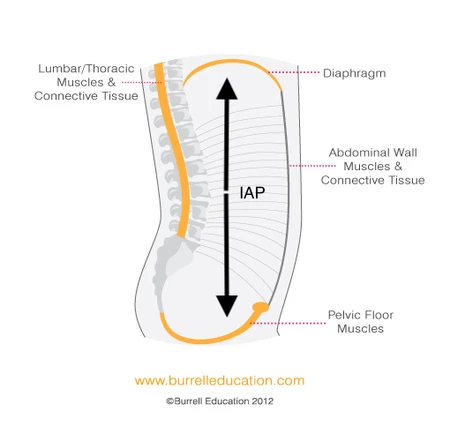Perhaps you’re reading this article because you’re a female powerlifter who has experienced some sort of leaking while lifting. You could also be a coach reading this article to help address this issue for your female athletes. This article is targeted at the lay powerlifter, so medical jargon and expressions will be toned down. Even so, there are still some terms that I hope everyone will have a chance to learn to increase their knowledge in this area.
It is always helpful to have a disclaimer before proceeding. I am a student physiotherapist, not yet trained as a women’s physiotherapist. Most of my understanding about the pelvic floor comes from research and inference from available literature. Feel free to contact us at [email protected] if you have further questions.
What is the pelvic floor?
The pelvic floor is a hammock-shaped structure comprising muscles, ligaments and tissue. This structure is located at the bottom of your hip to support the organs sitting within your hip bones. These organs include your bladder, womb and bowel; they are also termed as pelvic organs. The pelvic organs exit the body through your urethra (you can’t really find this when you look down), vagina (vulva is the part you see) and rectum (anus is the part you see), and are surrounded by the pelvic floor muscles.

What is the function of the pelvic floor?
At rest, the pelvic floor muscles (i.e. levator ani) together with the urethral and anal sphincter muscles, which are composed of predominantly type 1 striated muscle fibres, maintain a constant muscle tone (constant muscle contraction) to keep the bladder and bowel exits closed. This is one of the main reasons why we don’t walk around leaking pee and poop everywhere.

Why is it bad to force your pee/shit out when you are in a hurry?
This action is called “straining”. When you strain, you are directly applying pressure on your bladder and bowel to excrete your pee and poo. When this has been practiced for prolonged periods, one would grow accustomed to the sensation and strain when asked to contract the pelvic floor. Also, given the amount of practice straining, these women would be prone to strain at times of high IAP and experience leakage.
So how should I contract the pelvic floor?
Let’s first try locating the pelvic floor in you. If you take your hand and slide it down from your belly button, you’ll reach a bony point, this is your pubic symphysis (sim-firh-sis). Then, slide your finger down your butt crack and you’ll feel your tailbone, this is your coccyx (kok-six). For the third and fourth points, sit on a hard surface and lean your body slightly sideways. You will feel the bones underneath your butt cheeks, which are your ischial (Eee-sh-iel) tuberosities. These are the four points that your pelvic floor attaches like a hammock horizontally to support your pelvic organs.
- Sucking a blueberry into your vagina
- Bringing your anus closer to your vagina
- Plucking a tissue with your vagina
- Trying to stop your fart in public
For more information, please visit thepelvicfloorproject.com.
What next?
Stay tuned for our next article(s) on what happens when the pelvic floor does not function properly, what is urinary incontinence (UI) and how to manage it!
This article and commentary first appeared on ENSO Powerlifting, on May 18, 2020.


